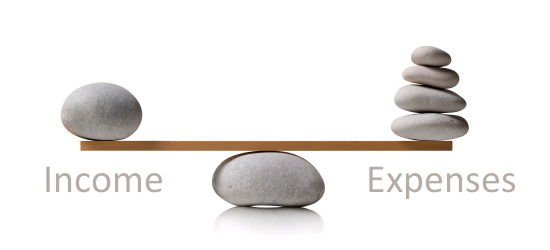MASTERING THE ART OF FRUGAL LIVING
What does frugal living really mean? We hear so much about frugal living, but what exactly is it? And how do you master it?
Mastering the art of frugal living, which revolves around living within your means, is a financial philosophy with significant value. It’s essential to understand that adhering to a frugal lifestyle doesn’t equate to abandoning your dreams. On the contrary, it’s a strategic approach allowing you to pursue your aspirations tranquility. By mastering the art of frugal living, you cultivate the ability to make thoughtful financial decisions, creating a space where you can actively recognize and work towards your dreams without the burden of unnecessary financial strain. This mastery of frugality brings forth a profound sense of peace as you navigate your financial journey with a keen awareness of allocating resources wisely. It becomes a harmonious blend where frugal living principles guide you toward financial stability and fulfilling your dreams.
Embracing frugality involves a conscious decision to stop wasting money on unnecessary expenses, redirecting resources towards what truly matters. By setting financial goals, individuals can align their spending habits with a purpose, forging a path toward long-term stability and aspirations. Frugality prompts a reevaluation of priorities, emphasizing the downside of retail therapy and impulsive purchases that may provide temporary satisfaction but hinder financial well-being in the long run. Choosing frugality means recognizing the value of each financial decision, steering away from frivolous expenditures, and instead channeling resources towards meaningful objectives, fostering a sustainable and purpose-driven approach to personal finance.
Frugal living involves conscientiously staying within your means and prioritizing a debt-free lifestyle. By embracing financial responsibility, you avoid accumulating debt and cultivate a habit of saving for your aspirations. This approach extends beyond mere dreams, encompassing practical aspects such as setting aside funds for inevitable repairs and replacements, ensuring a sustainable and secure financial future.
Mastering the art of frugal living is easier than you may think. Keep reading to learn more.
Mastering The Art Of Frugal Living
Mastering the art of frugal living necessitates acquiring a nuanced and practical understanding of its underlying principles. To truly master any concept, foundational working knowledge is essential, and frugal living is no exception. Frugal living is a deliberate and mindful approach to managing one’s financial resources, aiming to cut costs and optimize the overall financial landscape. Living below your means is a cornerstone of frugal living, encouraging individuals to spend less than they earn and fostering a sense of financial discipline and prudence. Beyond mere expenditure control, frugal living involves the strategic allocation of funds, exemplified by the practice of saving for upcoming events. This goes beyond short-term planning and instills a mindset of financial preparedness, whether for unforeseen emergencies, future investments, or personal milestones. Equally important is the emphasis on avoiding debt, recognizing that sustained financial well-being hinges on removing unnecessary financial burdens. By comprehensively embracing these principles, individuals can embark on a transformative journey toward mastering the art of frugal living and cultivating a sustainable and resilient financial future.
Why Do People Live A Frugal Life?
People often embrace a frugal lifestyle for various reasons:
- Many individuals choose frugality to escape the clutches of debt, recognizing the financial strain that can accompany lavish spending.
- Living frugally allows people to dictate the terms of their lives, prioritizing personal values and goals over societal expectations or consumerist pressures. This autonomy empowers individuals to make intentional choices about allocating their resources.
- A frugal existence is synonymous with embracing simplicity, emphasizing the appreciation of life’s essentials over material excess.
Through these principles, individuals seek financial stability and a sense of purpose and fulfillment in leading a more mindful and intentional life.
How Do You Practice Frugal Living?
Practicing frugal living is akin to mastering any skill – it requires a fundamental understanding of its principles and a commitment to applying them. Just as in basketball, where knowledge of the rules is essential for playing or practicing the game effectively, the same applies to frugal living. To embark on a frugal lifestyle, individuals must acquaint themselves with the core principles that govern wise financial choices and resource allocation. The rules of frugality encompass mindful spending, budgeting, and distinguishing between needs and wants. Moreover, akin to the basketball analogy, the more adeptly one applies these frugal living rules, the closer one comes to mastering the art of sustainable and intentional living. In essence, frugal living is not a rigid constraint but a skill honed through understanding and consistent application of principles that lead to financial prudence and a more purposeful existence.
The Power Of Mindful Spending
The profound impact of mindful spending unfolds through a multifaceted exploration of financial decision-making. At its core is the foundational recognition of personal desires and aspirations, encapsulated in the imperative of knowing what you want. This self-awareness is a guiding force, shaping a purposeful connection between financial choices and individual goals. The transformative potential becomes evident in the dynamic interplay between altering spending and saving behaviors, illustrating that money, when wielded through intentional adjustments, becomes a potent catalyst for goal attainment. Mindful spending, far from a passive endeavor, is a continuous and conscious process of holding in mind one’s desires. It necessitates a vigilant mental presence, steering individuals away from impulsive financial decisions. The crux of mindful spending lies in the discerning evaluation of each potential purchase, a deliberate exercise in determining its alignment with personal aspirations. This evaluative lens, firmly rooted in what one wants, injects intentionality into financial choices. In essence, the power of mindful spending lies in its ability to transform money from a mere medium of exchange into a strategic tool that propels individuals to fulfill their visions for the future.
Embrace Minimalism
Embracing minimalism is about keeping things simple. When you have fewer belongings, you don’t have to fix or replace stuff as much, making life less complicated. The idea here is about having less stuff and saving money for things and experiences that matter to you. So, it’s like simplifying your life, spending less on unnecessary things, and putting your money towards what makes you happy and fulfilled. It’s about finding joy in what truly matters and making your life more meaningful than just having many things.
DIY
Doing things yourself, or DIY, is a simple and effective way to approach various tasks. Not everything has to be purchased; sometimes, you can take matters into your own hands. Instead of always buying new stuff, consider fixing or repairing the things you already have. It’s a practical way to save money and make the most out of what you own.
The Art Of Meal Planning
Figuring out meal planning is like an intelligent way to save money. You might waste money on groceries if you don’t plan what to eat. When you go shopping without a plan, buying things just because they look good is easy, but you might never actually use them. Meal planning helps you avoid spending on stuff you don’t need and ensures your grocery shopping is more practical and purposeful. It’s just a simple way to save money and make sure you use what you buy.
Second-hand Shopping
Getting into second-hand shopping is a smart move because everything becomes used after you’ve used it once. So, why spend extra money on buying something brand new when, in the end, it will be used anyway? The idea here is straightforward – anything you get is technically a used item after that first use. It’s a practical way to think about things and a simple way to save money. Instead of always going for new stuff, you can find good-quality items that someone else used briefly, and it’s kind of like giving things a second life. Second-hand shopping is all about being sensible with your spending, recognizing that items don’t need to be brand new to be perfectly useful, and it’s an easy way to cut down on unnecessary expenses while still getting what you need.
How Can I Be The Most Frugal Person?
Being the most frugal person boils down to a simple yet impactful approach: living below your means and saving money for future events and needs. It’s about being smart with your resources and spending less than you earn. Adopting a lifestyle where your expenses are consistently lower than your income creates a financial buffer that allows you to save for things that matter to you. This frugal mindset is not about deprivation but about making conscious choices to prioritize savings over unnecessary expenditures. It involves finding joy in financial discipline and recognizing that accumulating savings provides both security and the freedom to enjoy meaningful experiences in the future. So, to be the most frugal version of yourself means embracing a balanced approach to spending, saving diligently, and aligning your financial choices with your long-term goals.
How Do You Embrace Frugality?
Embracing frugality is not just about making a random lifestyle change; it’s about finding your compelling reasons for doing so. The first step is discovering your “why” – the driving force behind your desire to change—perhaps the frustration of constantly feeling financially strained or the worry that comes with debt overshadowing your plans. Maybe life feels too complicated, and simplifying it through frugal choices is the solution. Once you identify your motivation, the next step involves exposing yourself to various frugal strategies. It doesn’t mean you must adopt every single one; some might seem too much effort for minimal return. Instead, it’s about building a working knowledge of different frugal practices and empowering yourself with a toolbox of strategies that align with your goals. Learning becomes a powerful tool in your journey toward frugality, allowing you to make informed choices that contribute to a more intentional and financially secure lifestyle.
Don’t Think Of Frugal Living As Sacrifice
Shifting your perspective on frugal living is crucial – it’s not about sacrifice but rather a strategic trade-off. Rather than perceiving it as giving up something, consider it as making a conscious trade in the present for something you genuinely desire in the future. It’s a simple yet powerful mindset shift, reframing frugality from deprivation to a deliberate exchange. You’re essentially making choices that align with your long-term goals, opting for financial prudence now in exchange for the fulfillment of your aspirations down the road. By viewing frugal living as a trade, you cultivate a sense of empowerment and intentionality in your decision-making, emphasizing that every choice you make is a step towards a future that aligns with your values and priorities.
What Is An Example Of Frugal And Stingy?
Distinguishing between frugal and stingy lies in the approach toward value and sharing, and being frugal means being conscientious about the importance of an item or service and actively seeking the best possible price without compromising quality. It’s a savvy and thoughtful way of managing resources, ensuring that every expenditure aligns with the perceived value. On the other hand, stinginess manifests when the reluctance to share stems from an aversion to parting with money. It’s a mindset that prioritizes personal wealth over collective generosity, where the fear of financial loss outweighs the potential benefits of sharing. While frugality is rooted in a strategic and mindful approach to spending, stinginess tends to be characterized by an unwillingness to contribute to others, reflecting a more self-centered mindset.
Conclusion
Mastering the art of frugal living encapsulates a multifaceted approach to financial well-being. It involves using a budget as a guiding tool, directing your money purposefully toward priorities. Living within your means and prioritizing quality over quantity are central tenets, ensuring that each expenditure aligns with your financial capacity and standards. Embracing frugal living goes beyond mere financial prudence; it signifies a commitment to a simpler life, unburdened by unnecessary complexities. By adopting these principles, individuals not only navigate their financial landscape more intentionally but also cultivate a mindset that values mindful choices and lasting satisfaction over immediate gratification. Mastering the art of frugal living is a holistic approach that empowers individuals to achieve financial goals while embracing a more straightforward, more purposeful way of life.
So what are you waiting for? Start mastering the art of Frugal Living!




